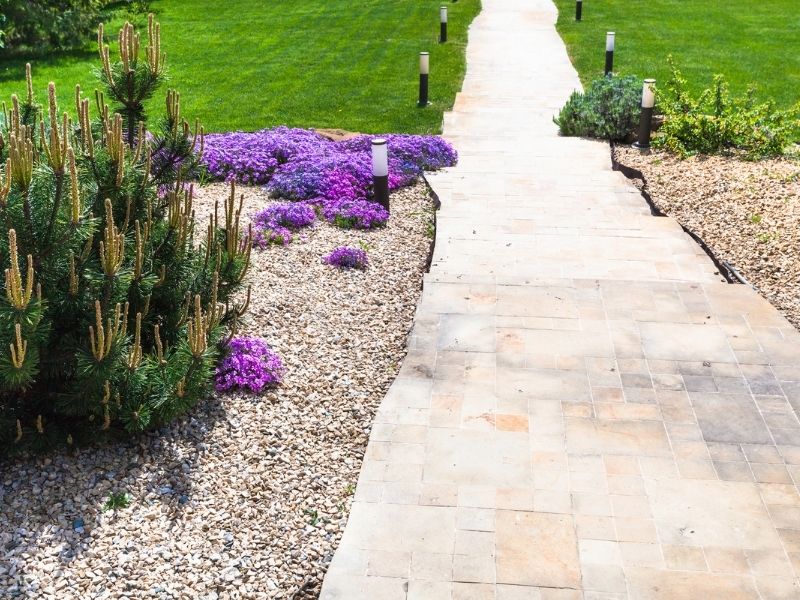How can I improve my curb appeal? Homeowners, especially those with sloping gardens and driveways, tend to have a hard time coming up with design ideas. However, with proper guidance, homeowners can turn their sloping driveways and patios into value-adding features. To assist you, today, we’re bringing you information about six amazing sloping garden and driveway design ideas. So, if this is a topic of interest to you, we invite you to continue reading to learn some essential knowledge.
Check out These Fantastic Sloping Garden and Driveway Design Ideas!

1. Experiment with driveway types.
There are different types of driveways to choose from if you are looking to design your sloping driveway. Do you have the right driveway for your home? Below are some common driveways types that will give your home a facelift automatically;
- Concrete driveway
- Asphalt driveway
- Gravel driveway
- Brick driveway
- Cobblestone driveway
- Green driveway
Concrete driveway types are the most common driveways in Essex homes for several reasons. For starters, concrete is a long-lasting driveway surface. Moreover, if installed correctly, concrete is practically maintenance-free.
Contact a professional contractor with experience in installing driveways in Essex.
2. Install a patio.
Ideally, a patio will be sited just outside your living space or kitchen, whether your garden slopes upwards from your home or downwards and away. If you want to install a patio on your sloping garden, you should note that good drainage is essential to ensure your patio doesn’t get submersed every time it rains.
Hire professional patio builders in Essex for quality workmanship. The patio builder should make a provision for drainage of retaining walls and for the patio itself, especially if a retaining wall surrounds it.
3. Terrace your sloping garden.
Manipulating a gentle slope to make level terraces is not a difficult task. However, terracing a steep slope gets more challenging. You will probably require earth-moving equipment and extensive foundations. If the slope is gradual, you can achieve leveling with timber retainers, such as sleepers. Terracing can be an expensive project, so opt for alternative budget-friendly options such as retaining walls.
4. Install stone walls for interest (retaining walls).
Make your sloping garden interesting by making terraces using retaining stone walls. Retaining stone walls create spaces to plant your drought-resistant plants and alpines. It will also provide a backdrop to the plants.
5. Plant ornamental grass.
Ornamental grass is ideal for sloping gardens. Most lawn owners prefer well-drained soils. The added angle of the slope provides a cascade effect when the wind blows them. Fortunately, there is a wide variety of ornamental grass to choose from to give your sloping garden character.
6. Create a defined route and pathway.
Place steps at alternate ends of each terrace to create a defined pathway/route via the sloping garden. You can link the pathways from your garden driveway to the patio for easier accessibility.
Pathways add interest and give your sloping garden and driveways character. In addition, you can define the edge of borders using a plastic or metal border edger or a line of gravel setts.
In conclusion.
We hope these amazing sloping garden and driveway design ideas spark inspiration for your project. Contact your local driveway and patio builders to advise you on alternative design options. Proper driveway and patio maintenance for sloppy grounds also increase your curb appeal and ultimately increase property value. If you have any questions or suggestions, we always love to hear from you in the comments below. Also below are links to more fantastic articles about ALL things DESIGN for your home or business.
Images Courtesy of Canva.
Other Posts You Might Enjoy:
6 Easy Tips to Tackle an Overgrown Garden
6 Curb Appeal Projects that Add Value to Your Home





